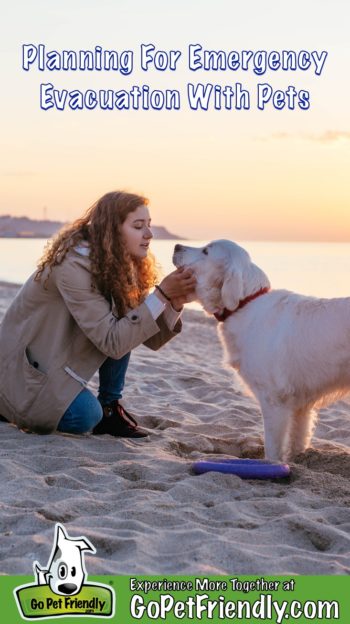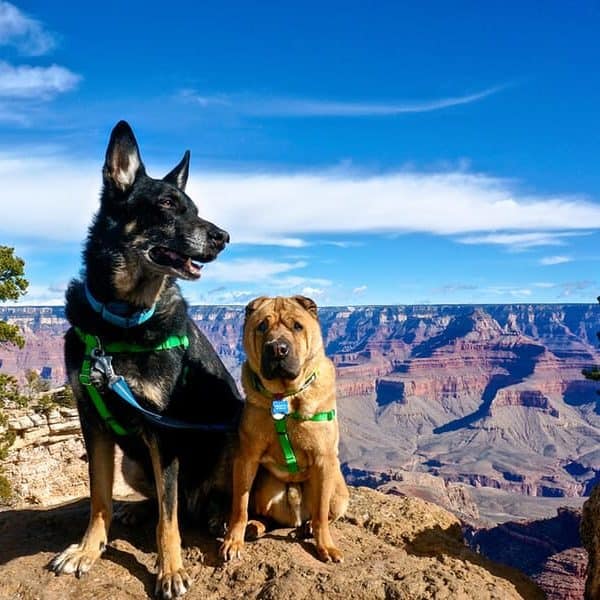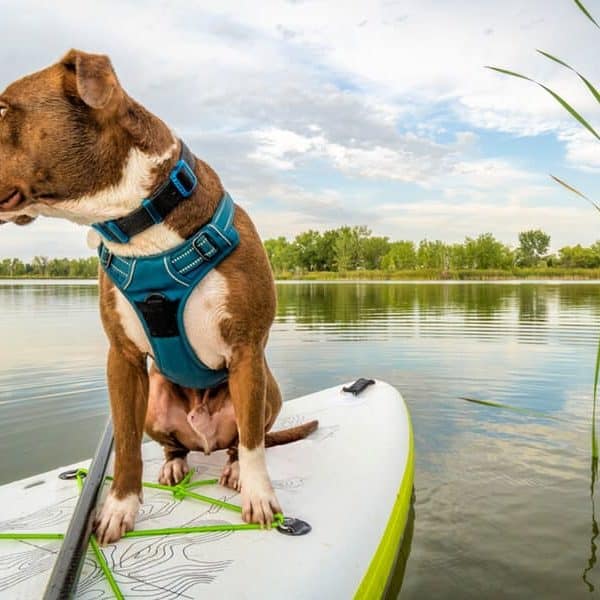There are some additional things to consider when preparing for an emergency evacuation with your pets. But taking the time now ensures that you and your furry loved ones will have everything you’ll need if you’re temporarily uprooted.
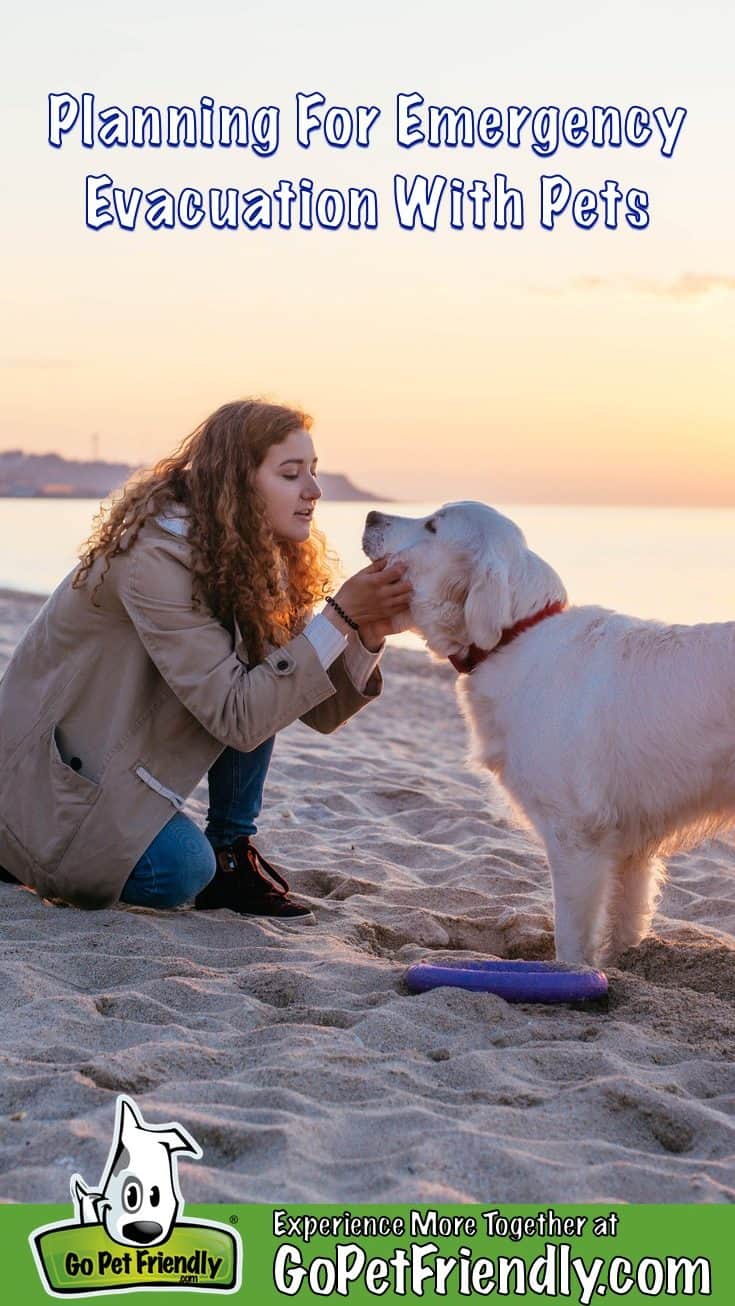
Evacuations occur for all kinds of reasons. A hurricane, flood, earthquake, wildfire, train derailment, or industrial accident could cause you to unexpectedly need to leave your home with very little notice.
When your family includes pets, having an emergency evacuation plan is vital. Hopefully, you’ll never need it. But you might. And the time spent now, calmly gathering the necessities and identifying places to stay, will reduce the stress and fear of being evacuated. Follow these steps, and you’ll sleep better knowing you’re prepared for an emergency evacuation with your pets.
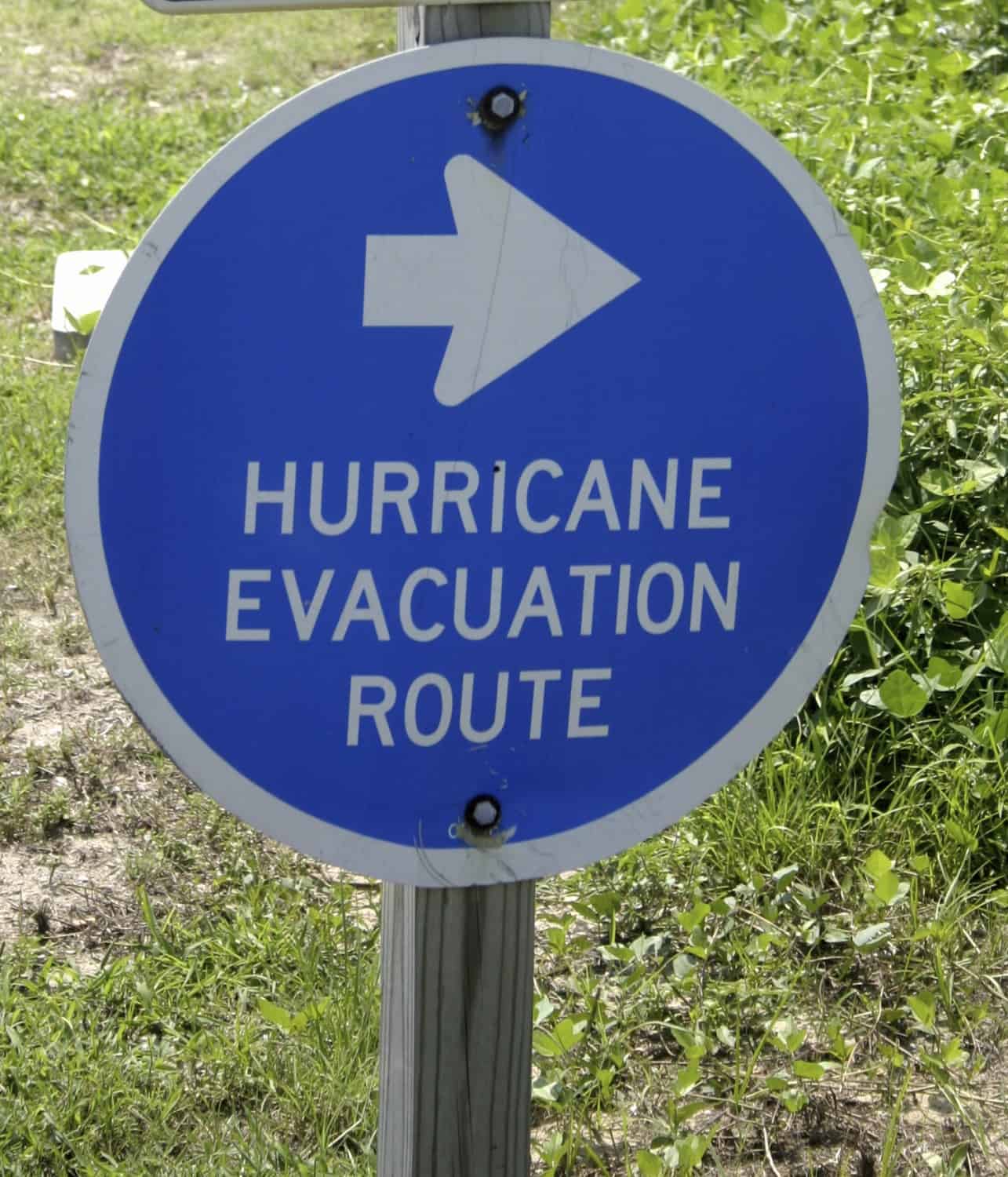
Do You Really Need An Emergency Evacuation Plan?
We’ve already discussed that no one is immune from a possible evacuation. Quickly searching recent news brings up stories about catastrophic flooding in New England, terrifying wildfires across Canada, and the continued recovery from the train derailment in Ohio.
So, we agree … it could happen to anyone. But does that mean you should take time out of your schedule right now to prepare for something that might never occur? The answer is yes.
In an emergency situation, there could be very little time for you to pack for yourself and your pets. Let’s try to imagine what it might be like …
Set a timer for 20 minutes.
Go ahead — I’ll wait.
No, really. Set the timer and press START.
Now, try to gather everything your family – including your pets – would need to be away from home for three days before the 20 minutes is up.
And don’t forget to find the car keys!

It’s panic, right?! Thinking straight under that kind of pressure is nearly impossible. And you participated in this exercise voluntarily!
To make the experience even more realistic, ask a friend to mark their calendar for about a month from now. Sometime during the day she chooses (after you’ve completely forgotten about it) have her call you and give you 20 minutes to prepare to evacuate. Without any advance preparation, the chances you’ll succeed in collecting even the absolute necessities are slim.
Packing For Your Pets In An Emergency Evacuation
Our pets have a wonderful ability to live in the moment. It’s something we generally admire and possibly even emulate. The downside is, when it comes to planning for an emergency evacuation, you’re going to be on your own.
And pets need a lot of stuff when they’re away from home! To keep everything organized, many people pack a “go-bag” with their essentials. Having everything in one place makes it easy to grab as you’re heading out the door.
Here is a list of things to include in your “go-bag” for your pets:
Food and water for three days. Pack your pet’s food in a waterproof, resealable container. Then set a calendar reminder to swap out the food every three months, so the packed food is always fresh. Include lightweight, collapsible food and water bowls to save space.
Medication for a week. Your pet’s medication should also be packed in a waterproof, resealable container and rotated every three months. If the medication requires refrigeration, keep a small cooler with your go-bag, along with a note reminding you to grab the medication from the refrigerator and some ice packs from the freezer.
A first aid kit.
READ MORE ⇒ Make A Pet First Aid Kit For Your Car
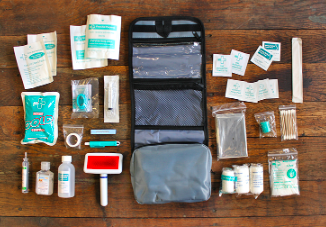
Proof of vaccination and ownership. Emergency shelters generally require proof of vaccination, and your pet’s tags might not be sufficient. So make a copy of your pet’s most recent vaccination certificate. Also print a photo of your pet that you could use to make posters if you and your pet should get separated. Finally, when your pet is found, you might need proof of ownership (like a microchip number) to claim him or her. Keep all three documents in a sealed, waterproof bag.
An extra collar with ID tag and a leash. Your pet likely has an ID tag, but if cell service is down or you’re not at your home, the tag probably won’t have the best contact information for you. Stick a blank label on the back of an ID tag and put it in your emergency kit along with a permanent pen. That way you can write your temporary information on it and attach it to your pet’s collar.
A muzzle. Some emergency shelters only allow muzzled dogs. Your dog will be more comfortable if he’s been acclimated to wearing a muzzle in advance. Pack a soft muzzle you can easily slip on your pup if needed. And refresh his training every three months when you switch out his food and medication.

A familiar toy, blanket, or bed. Being evacuated is stressful for everyone. Having a few comforts from home will help relieve any anxiety your pet might be feeling.
A kennel or carrier. If you’re planning to take your pet with you to an emergency shelter or hotel, be sure to have a carrier or kennel along. Some emergency shelters require pets to contained, and hotels might also require a carrier or kennel if you need to leave your pet unattended in the room.
Waste bags and/or a litter box with litter.
READ MORE ⇒ Tips For Traveling Alone With Pets
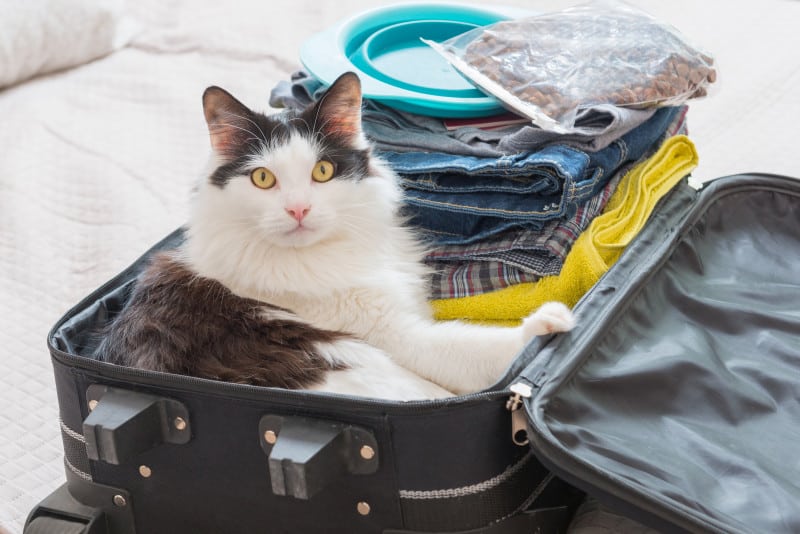
Locate A Pet Friendly Place To Go
After you’ve gathered and packed the things you and your pets would need in an emergency evacuation, the second step is figuring out where you’ll go. Not all emergency shelters allow pets, and those that do might have strict guidelines. Start by familiarizing yourself with your community’s evacuation facilities and their policies so you’ll know your options.
If your local emergency shelter doesn’t accept pets, follow the additional steps below to plan your family’s safe evacuation.
Map Multiple Evacuation Routes
The path of dangerous weather and possible road closures could impact your planned evacuation route. So map out two or three potential options. Then locate pet friendly accommodations in each destination.
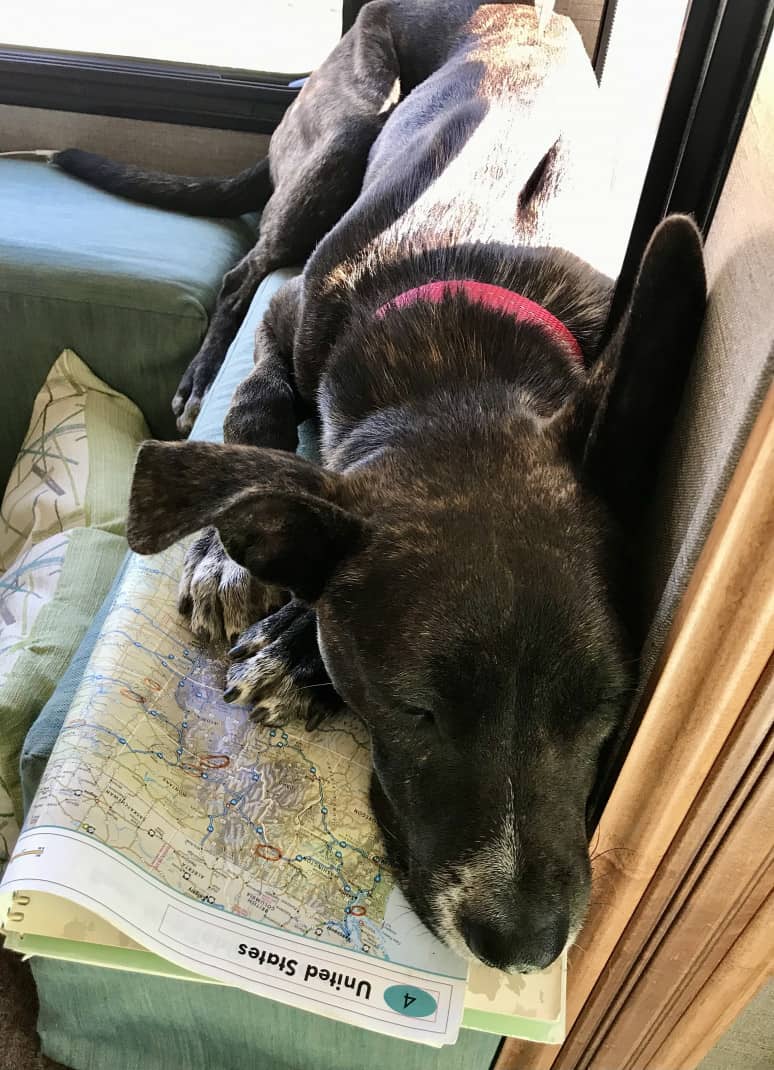
Choose Your Accommodations
For each possible evacuation route, you’ll need to find a place to stay. In an emergency, it could be comforting to stay with family or friends. If that’s your plan, call to confirm your pets would be welcome. Then refresh your memory on how to be a considerate guest when traveling with pets.
To find pet friendly hotels or campgrounds in your destinations, use a website like GoPetFriendly. Call to ask about breed and weight restrictions, and also determine if they charge additional pet fees.
When you’ve made your selections, print out the name, address, phone number, and driving directions to each location and pack them in your go-bag.
READ MORE ⇒ Pet Policies For All U.S. Hotel Chains

It takes some time to prepare for an emergency evacuation with pets. But it’s an investment that will save you a lot of stress and heartache if the need arises. And making a plan that considers your needs as well as your pets will keep everyone safe!

